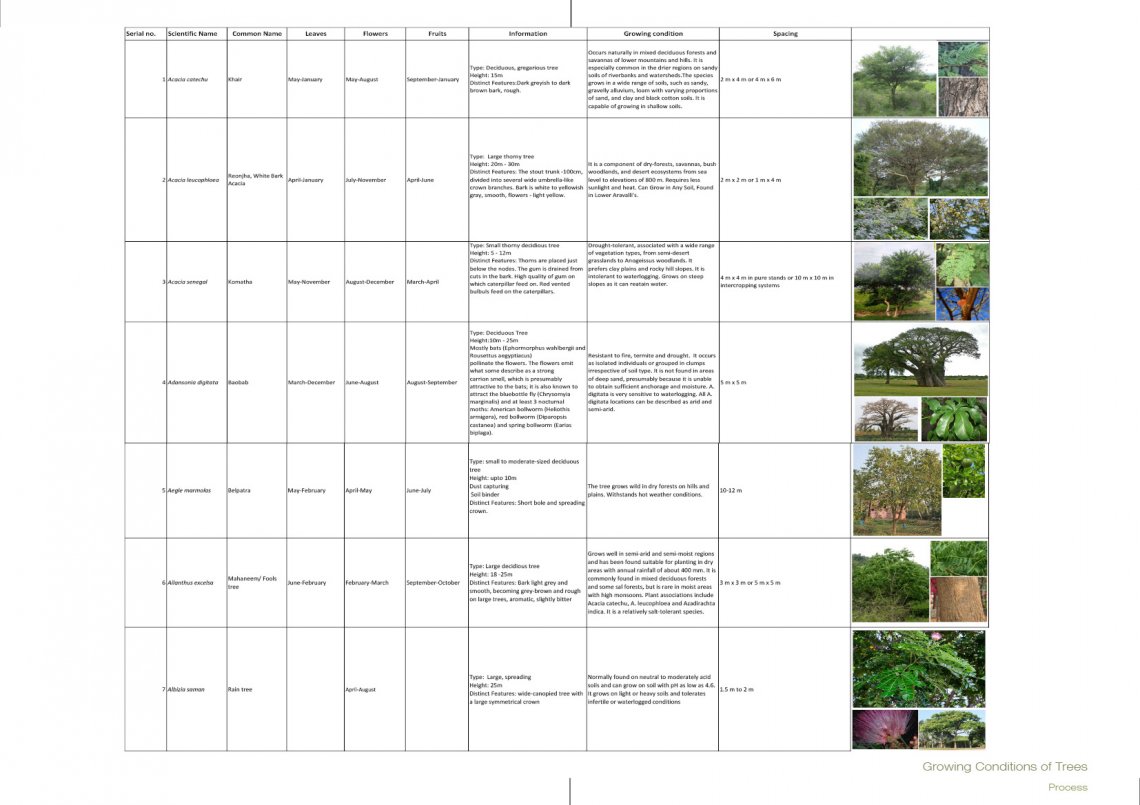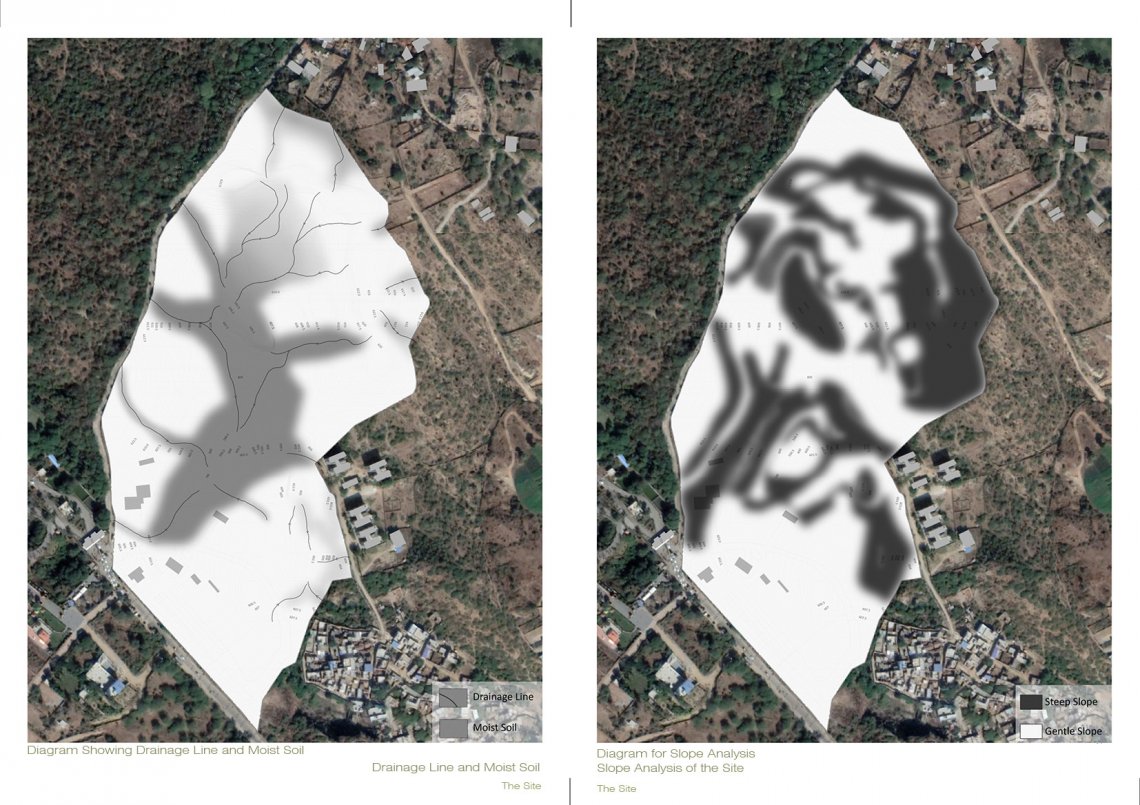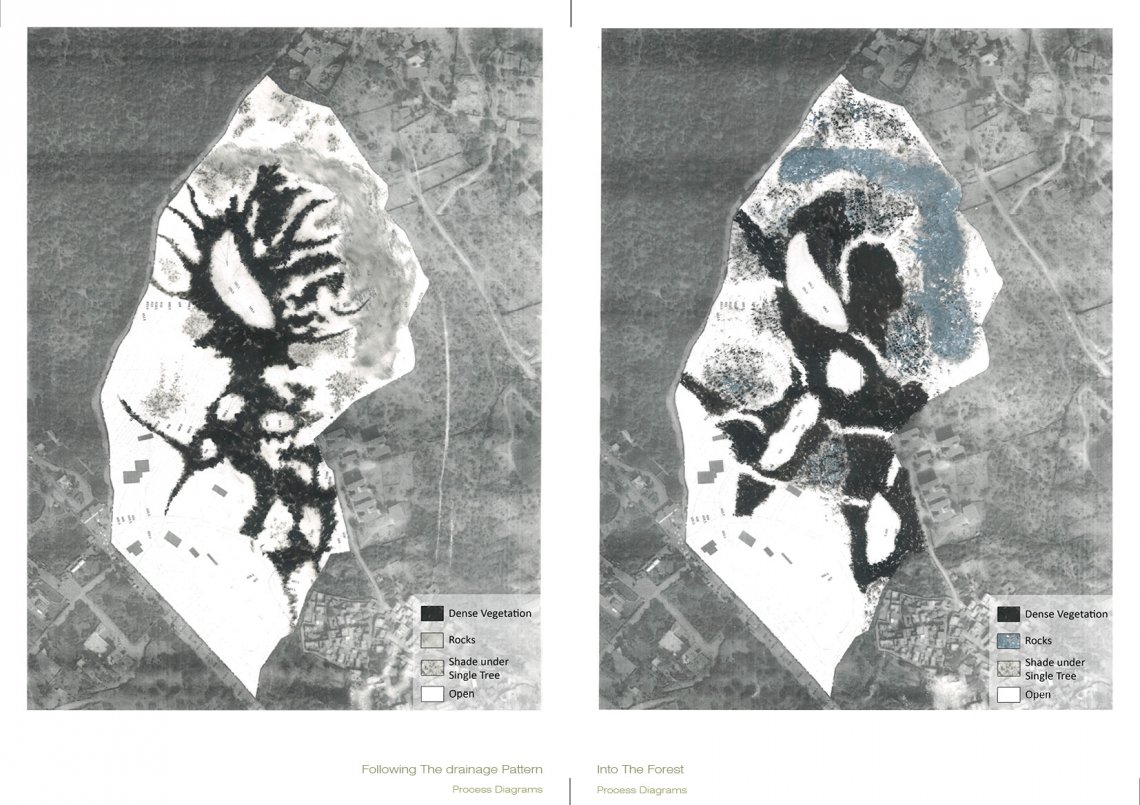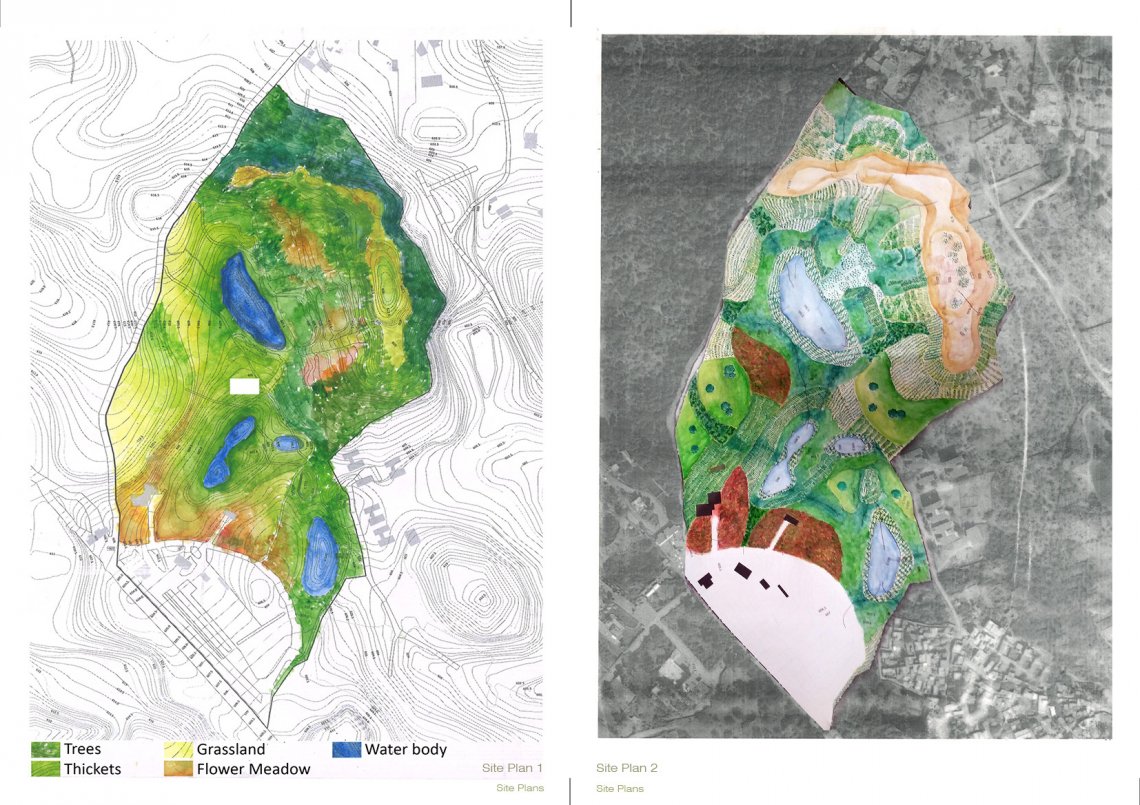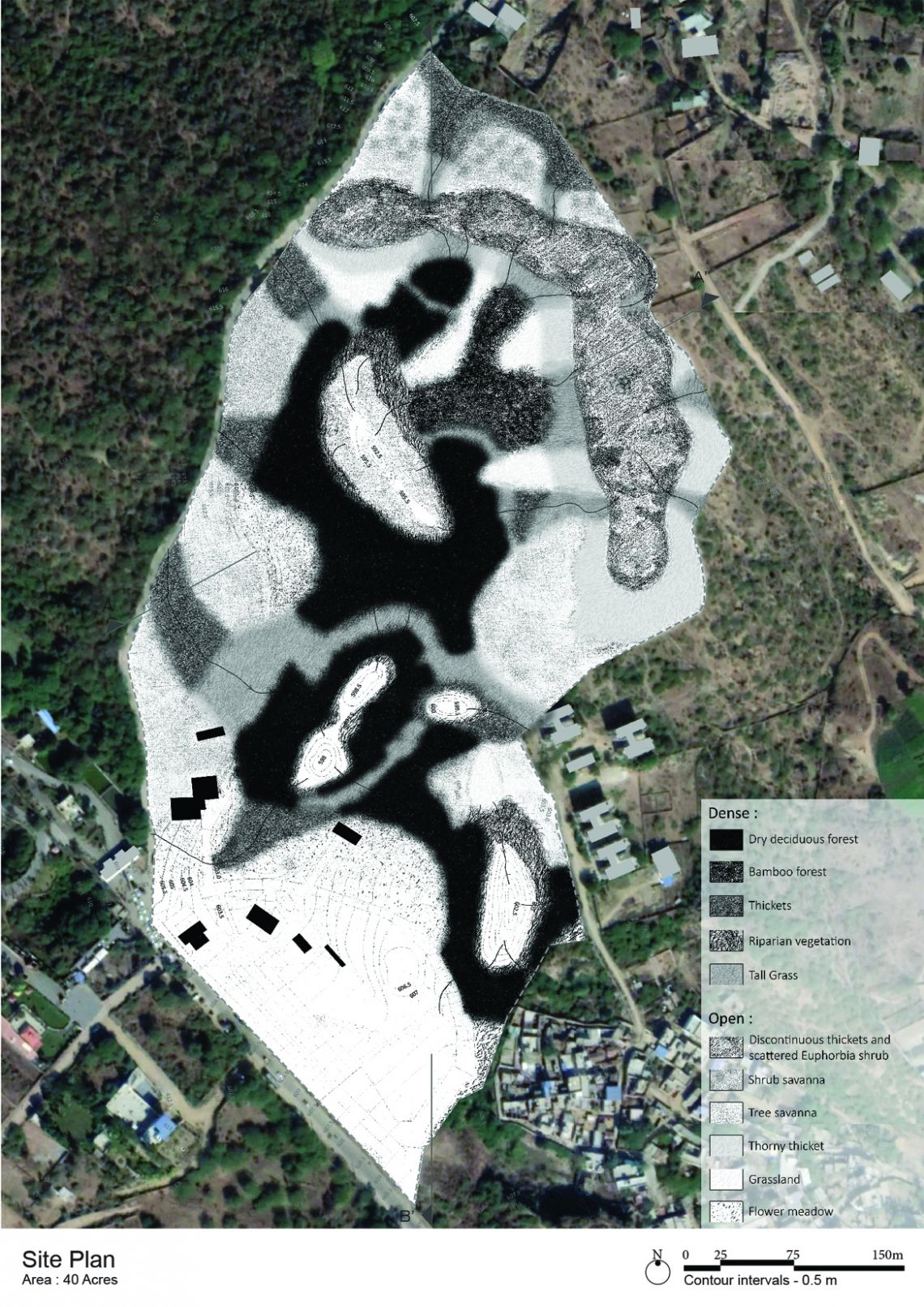Your browser is out-of-date!
For a richer surfing experience on our website, please update your browser. Update my browser now!
For a richer surfing experience on our website, please update your browser. Update my browser now!
A forest landscape can be interpreted as a painting or a collage of different colours and patterns. Like a Chiaroscuro painting it has strong contrast of light and dark. The change in the colour and texture of a forest with lower light intensity can be experienced best if a contrasting dense and open forest is created.One of the dominant characteristics of sajjangarh forest is its visual and tactile contrast. Some parts of the forest are open and lit whereas some parts are covered with dense vegetation creating pockets of shade. Contrast can be noticed in growth of vegetation and the texture of the ground. So, elements from the forest will be taken to create a dramatic effect of contrasting areas of light and dark on the site. A transition from open to dense dark forest will be created with view points to create pause. The colours and patterns of the forest are further highlighted with sunlight which creates a sense of volume and depth like a Chiaroscuro painting. When light falls on an element it highlights certain details and also creates tints and shade of a particular colour of the element. Places can be created with different intensity of light which will enhance different patterns and colours of those places. In the site a visitor if moves along a shaded pathway with sun-flecks and is suddenly brought to a bright place, some scattered pockets of shade will create pause from where he can notice the change in colour due to the presence of light. Dense forests are dark, more humid, and less prone to extremes of temperature variation than outside. In dense forests it is possible to recognize three to four distinct layers - at the top is the tree canopy, below are the shrub layer, the field or herb layer of herbaceous plants and short woody plants and layer of mosses, lichens, and algae but at some places barren lands are also found due to the absence of light. The amount of light reaching the forest floor may be as high as 50% of full sunlight in an open forest. In deciduous forests, light levels gets higher once the leaves have fallen, but the trunks and branches block some light such that light levels are likely to be below 70 to 80%. Evergreen forests tend to cast similar shade all year round. Some plants thrive in places with high intensity of light whereas some plants grow in shade. The type of vegetation depends on the percentage of sunlight that reaches that tree. Depending on the amount of sunlight a forest can be divided into two categories - Open forest (with full sun), Dense forest (with dappled sun and full shade).



